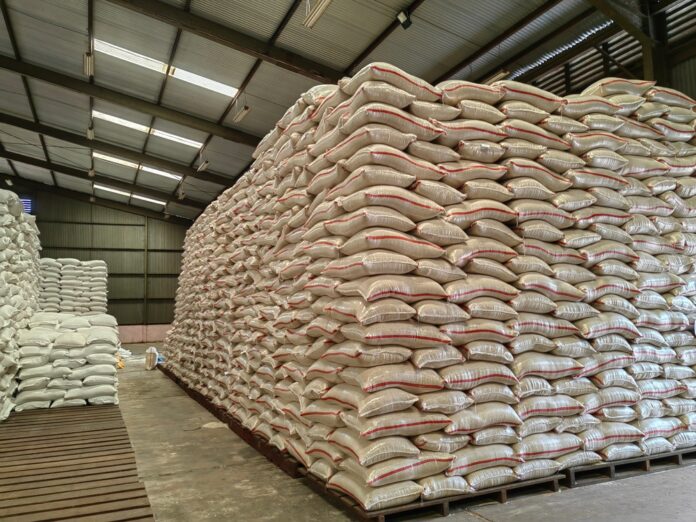The Department of Agriculture (DA) on Monday projected the national rice inventory to round the year nearly twice the level achieved in 2023 to 3.64 million metric tons (MT), the debilitating impact of the El Niño notwithstanding.
Agriculture assistant secretary Nichols Manalo said this amounts to approximately 93 days of national consumption, exceeding the 1.9 million MT recorded in December last year.
Manalo, also National Rice Program director, said the El Nino weather disruptions officially declared over by the Philippine Atmospheric Geophysical and Astronomical Services Administration (Pagasa) on 7 June, damaged an estimated 2 percent or 191,233 MT of rice of the 9.2 million MT reported at the end of the dry months.
The national rice inventory calculates the volume of rice available for Filipinos after subtracting factors as consumption, waste and others. The inventory includes locally-produced and imported rice and a key factor in assessing food security and planning for agricultural and trade policy purposes.
According to the DA, the projected year end rice inventory is the highest in 25 years topping the 3.42 million MT achieved in 2010 based on data from the Philippine Statistics Authority.
Manalo also said only 4 percent or 188,861 MT of the 4.5 million MT corn harvested this year was ruined by El Niño.
“This indicates that our rice and corn supplies were not severely impacted,” Manalo said.
He also said that as of 6 June this year, the DA extended financial aid and farm inputs worth P9.23 billion that benefited 1,174,699 individuals working across 170,469 hectares ruined by El Niño.
This early, the DA likewise said preparations are in place in anticipation of the La Niña such as the desilting of irrigation canals, repair and rehabilitation of irrigation systems; inspection and maintenance of irrigation gates and hoists and the construction of small-scale irrigation projects and canals.
Additionally, the DA is promoting submergent-tolerant and early maturing crop varieties and has established seed reserves in key areas to ensure sustained food production nationwide despite irregular weather patterns.
On the government decision lowering the tariff on imported farm products, especially on rice, Agriculture Secretary Francisco Tiu Laurel Jr. gave assurance the government is prepared to allocate the necessary funding to support agricultural modernization and improve the lives of farmers.
This relates to last week’s Executive Order 62 adjusting the classification and rate of import duties on various goods, including rice imports and keeping them low for longer to help bring down prices for consumers.
The tariff on rice was reduced from 35 percent to 15 percent starting July.
Farmers groups have criticized EO 62 as detrimental to their welfare by reducing the potential coffection under the Rice Competitiveness Enhancement Fund (RCEF), adding plans to challenge the legality of the presidential order.
“It is not really anti-farmer because the government is committed to filling any funding gap in the RCEF to enhance farmer competitiveness,” Tiu Laurel said in response.
He also said the DA is set to increase farmer support via additional farm equipment and fertilizers and that the National Food Authority will continue to purchase rice from local farmers at fair prices to ensure stable income.
Tiu Laurel added the National Irrigation Administration is building more water impounding dams and implementing solar-powered irrigation and solar pump systems in anticipation of the La Niña.
These measures, he said, are designed to manage excess water and redirect them to areas it is needed the most.







